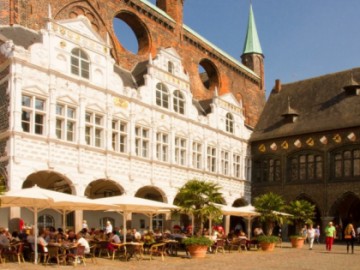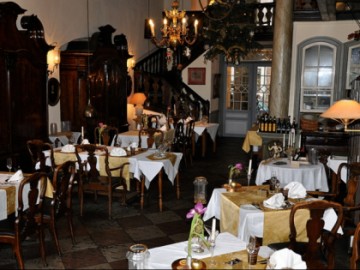Lubeck Salt Warehouses and Holsten Gate: Two Symbols of the City
The mainattraction of the Hanseatic Lubeck is its salt warehouses. It is six buildings ofthe XV-XVIII centuries in merchant style, pressed to each other. They werebuilt from 1479 by 1745. Their importance for the city cannot be overstated. Itis thanks to the salt trade that the port city became rich: the city became theleader of the Hanseatic League and most powerful in the Baltic region.
It was to these warehouses that the salt was deliveredfrom Lüneburg through the rivers and canals. Ships from Lubeck transported it tocountries that desperately needed the best natural "refrigerator" forperishable products. Later grain and other supplies, which were a specialdemand, were stored in the warehouses. Today, drapery is located in thehistoric interiors.
The salt warehouses are the most photographed sitein the city largely due to its successful location near the water and becauseit is well-preserved and has spectacular night lighting. There is also a proportionof mysticism here: the great German director Friedrich Wilhelm Murnau shotscenes at these places for his expressionist masterpiece "Nosferatu: A Symphonyof Horror» (Nosferatu, eine Symphonie des Grauens). The protagonist vampireCount Orlok lived in one of these houses!
Next to the warehouse there is another majorattraction of Lubeck and one of its symbols -Holsten Gate (Holstentor). The double-toweredgate was built of glazed bricks in the Middle Ages and was provided withloopholes. They were the center of fortifications encircling Lubeck anddefended it from enemies. The gate was built specifically to protect againstthe Danes, with whom Lubeck had been in an uneasy relationship for a long time.Since 1950, the city’s museum of history has been in Holsten Gate. The gate wasoften depicted on old engravings of all kinds. Today, they regularly appear onthe banknotes, then on television spots, and even in computer games.







































